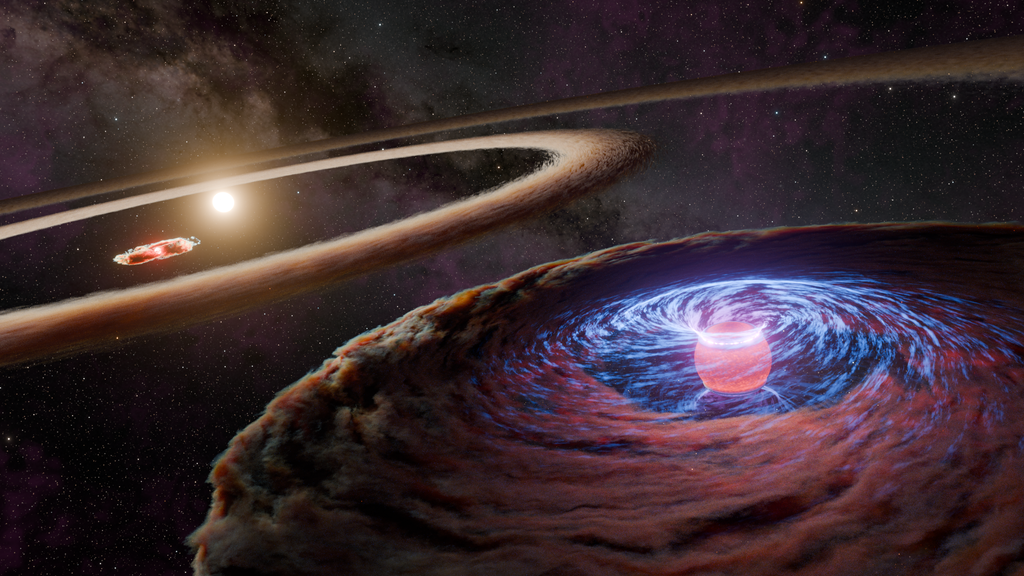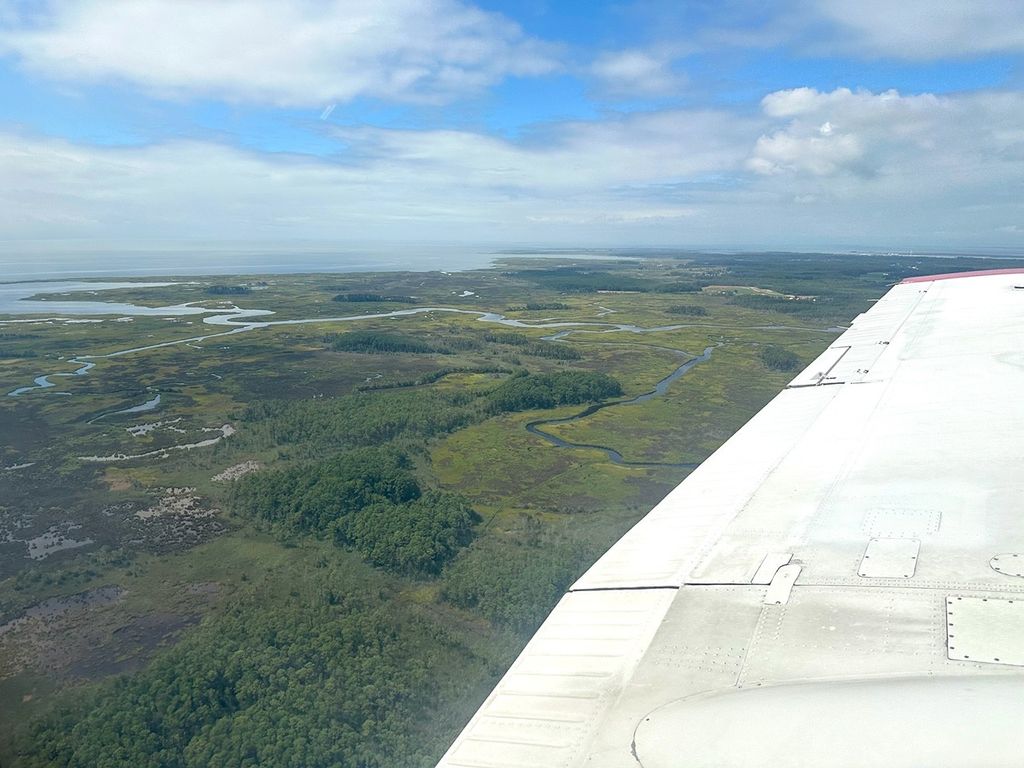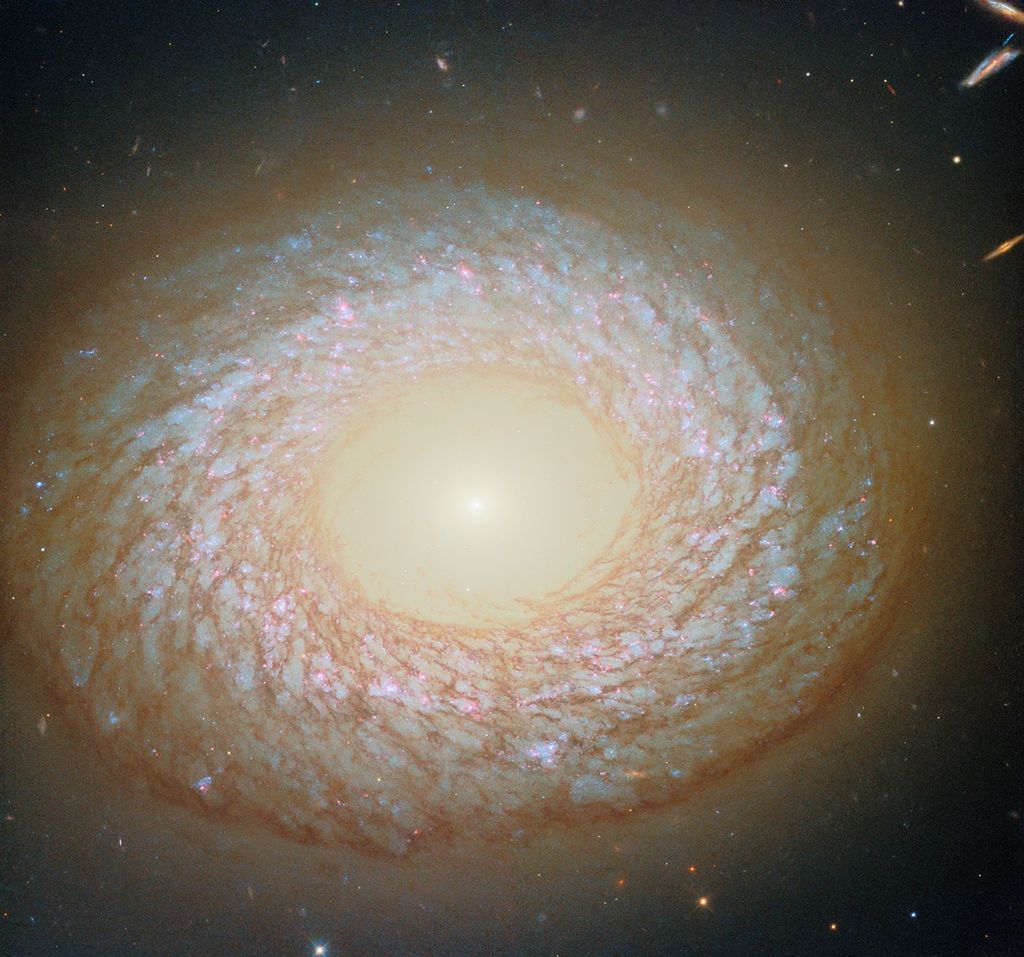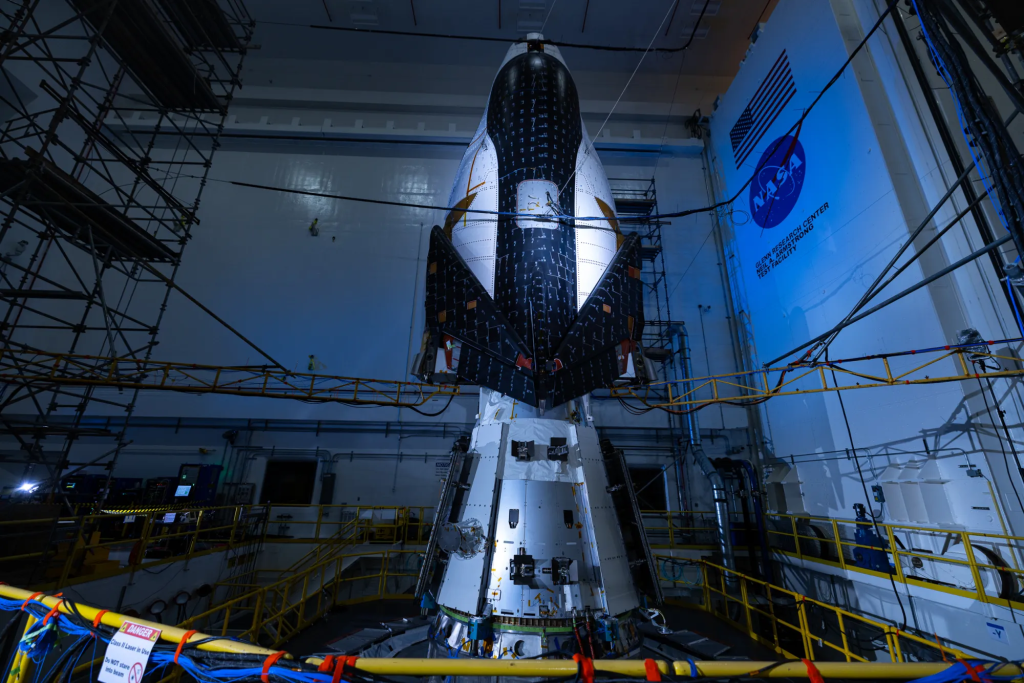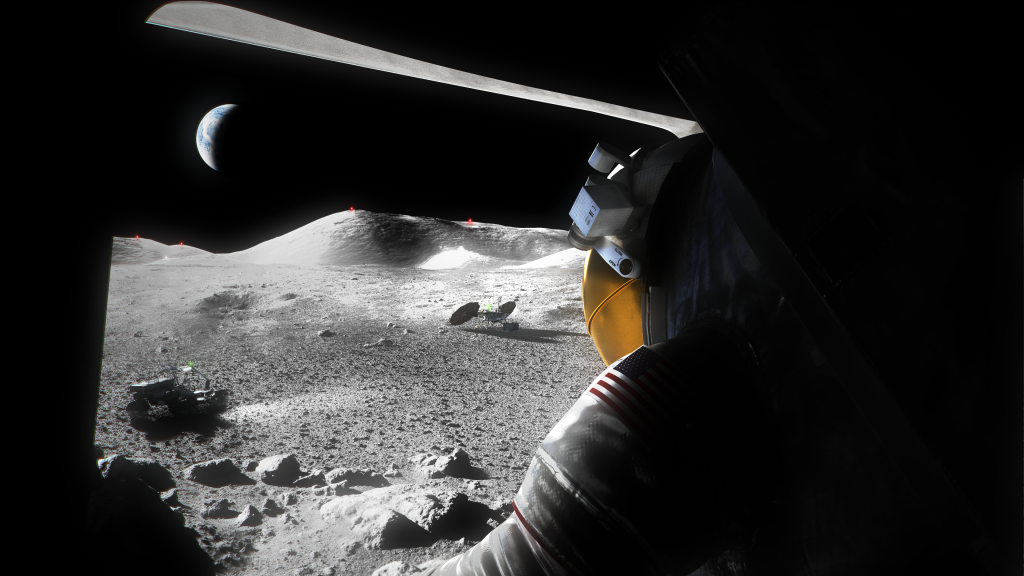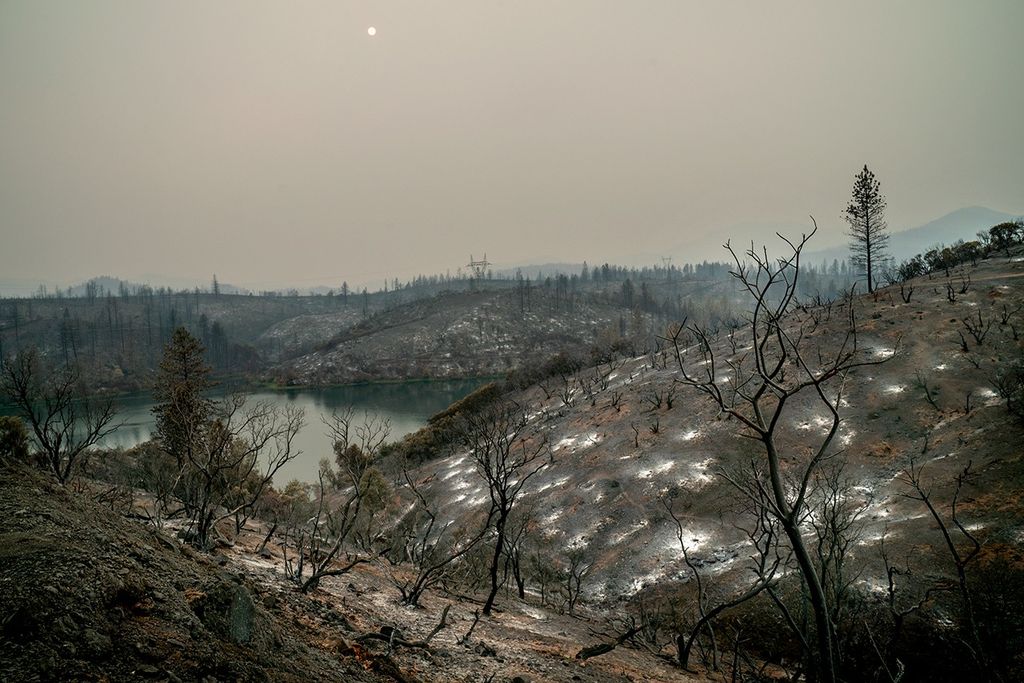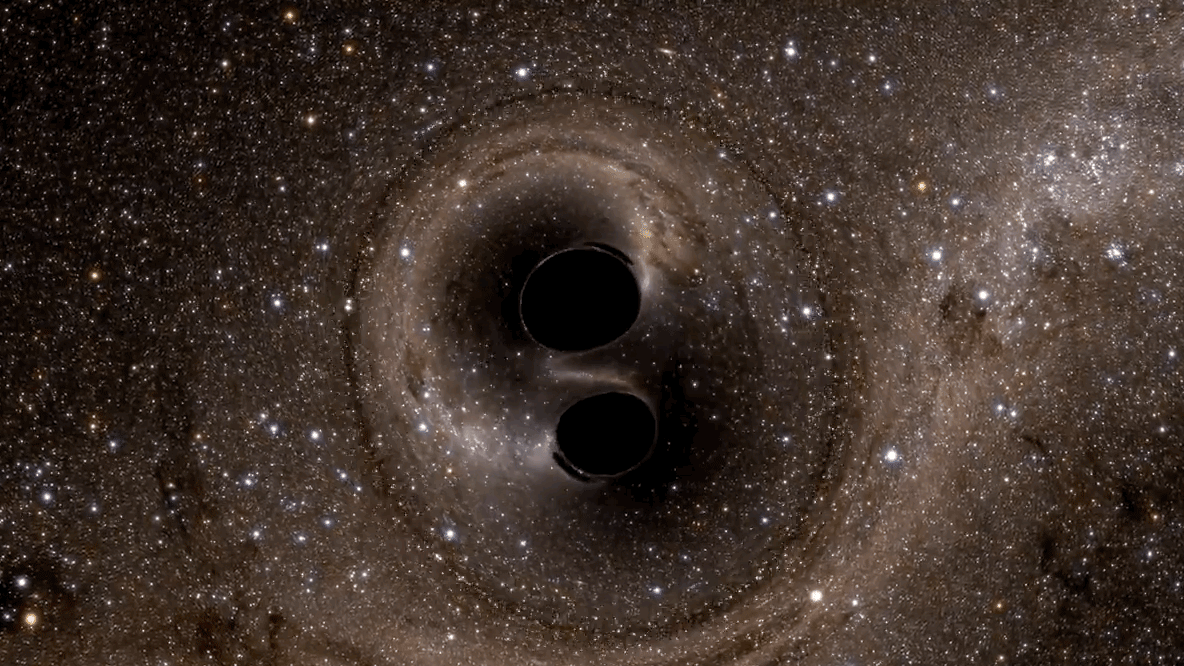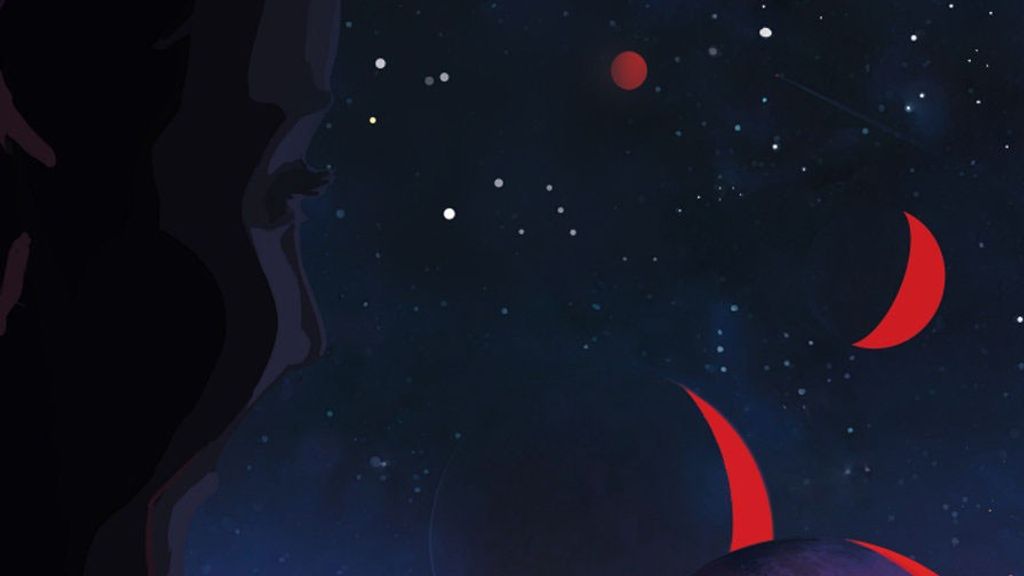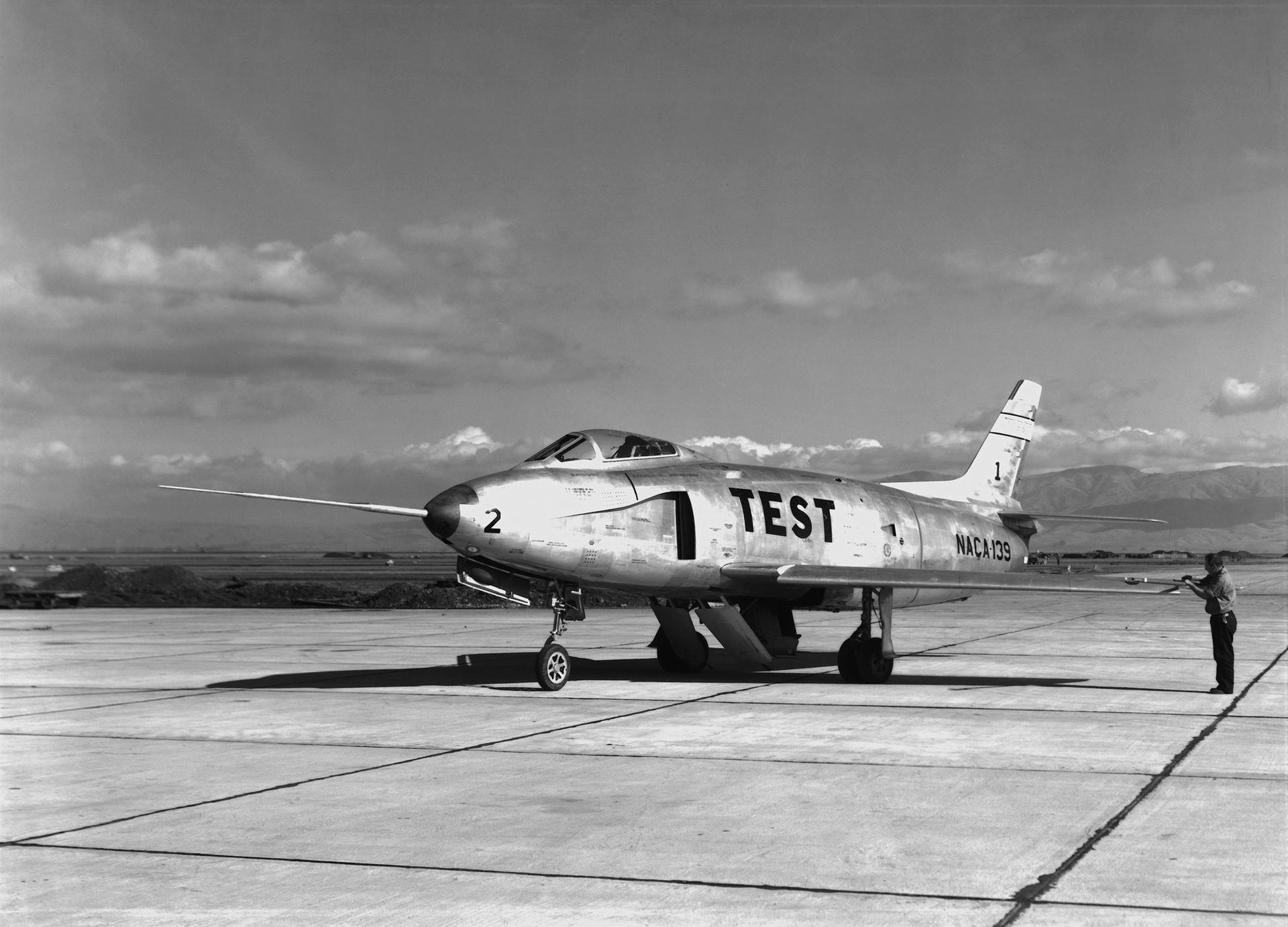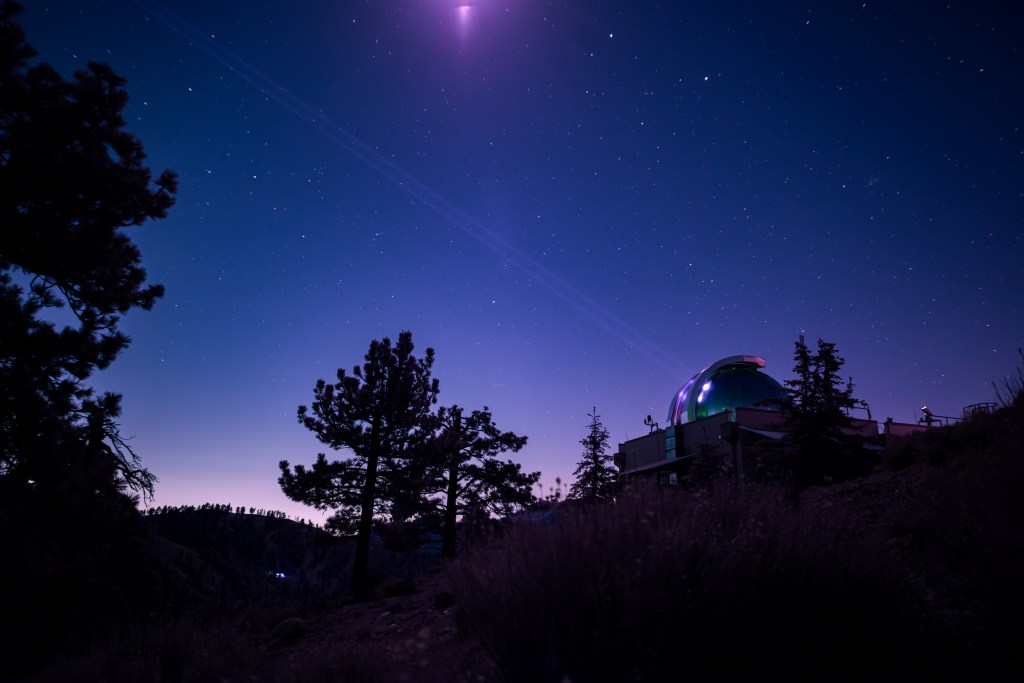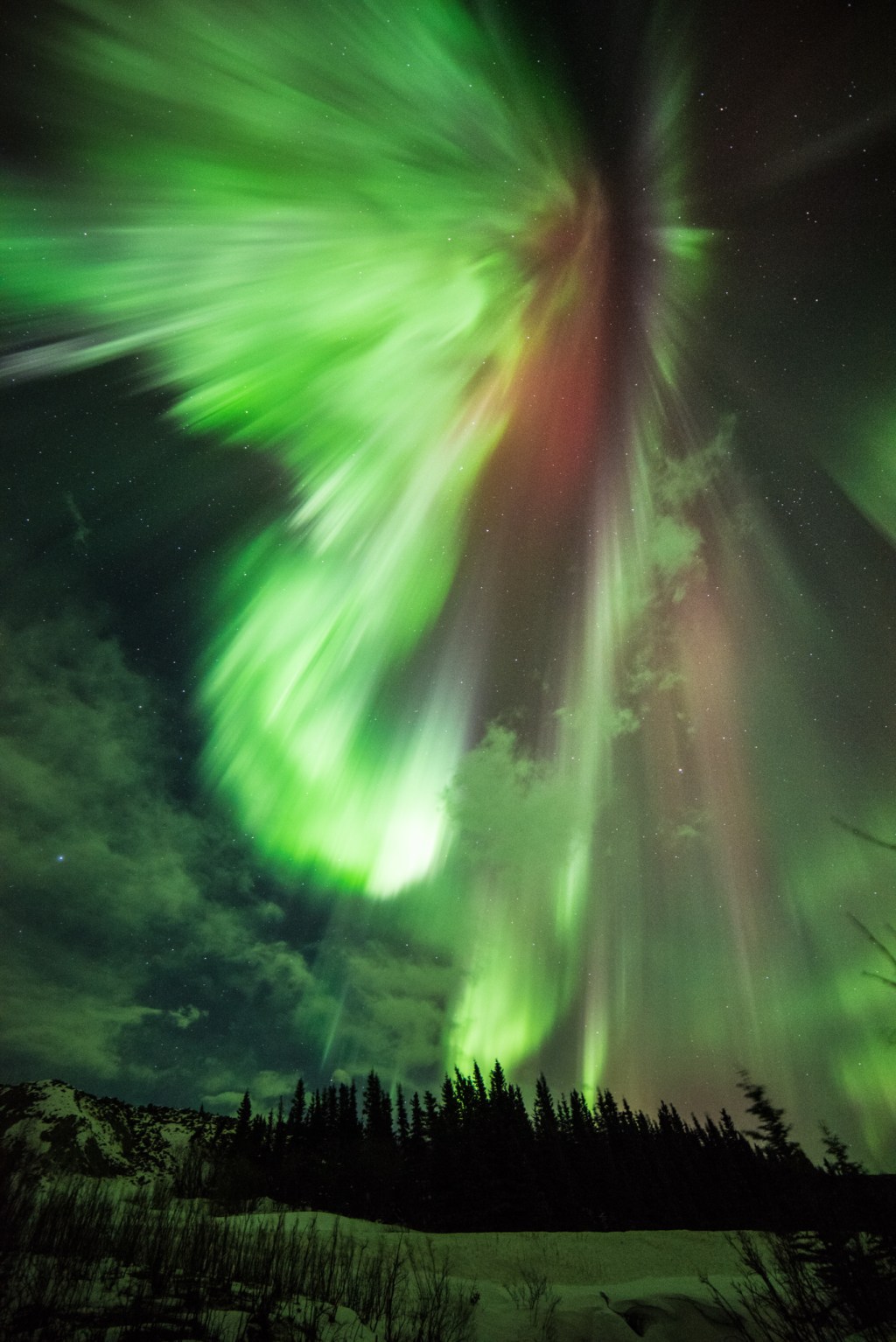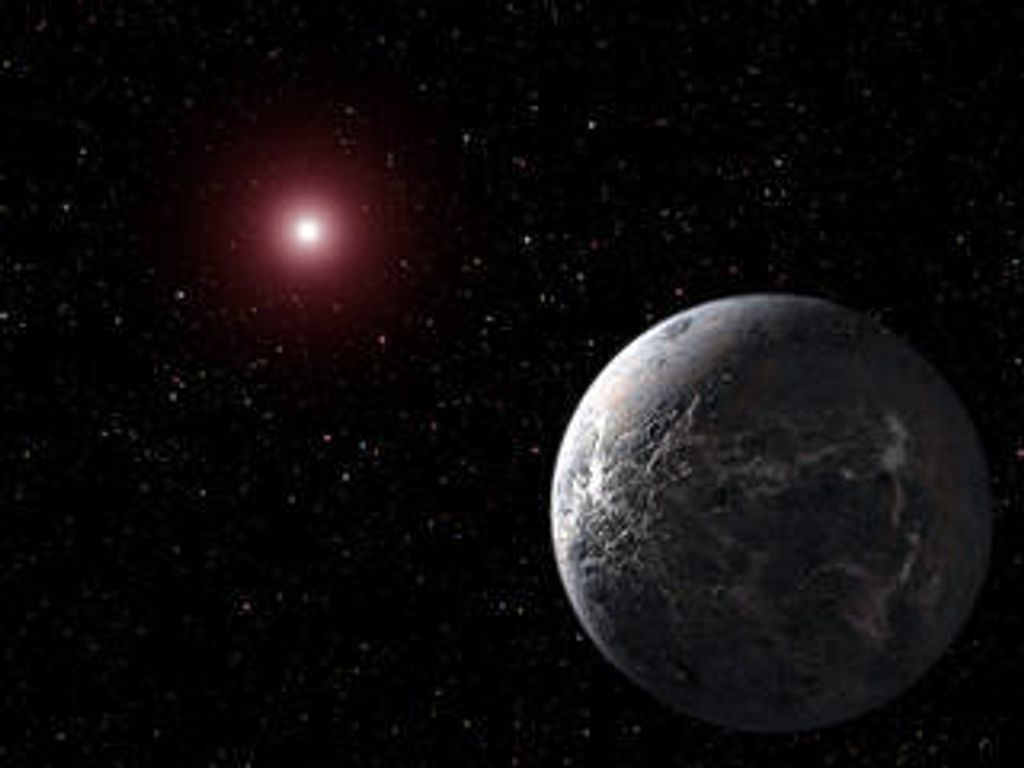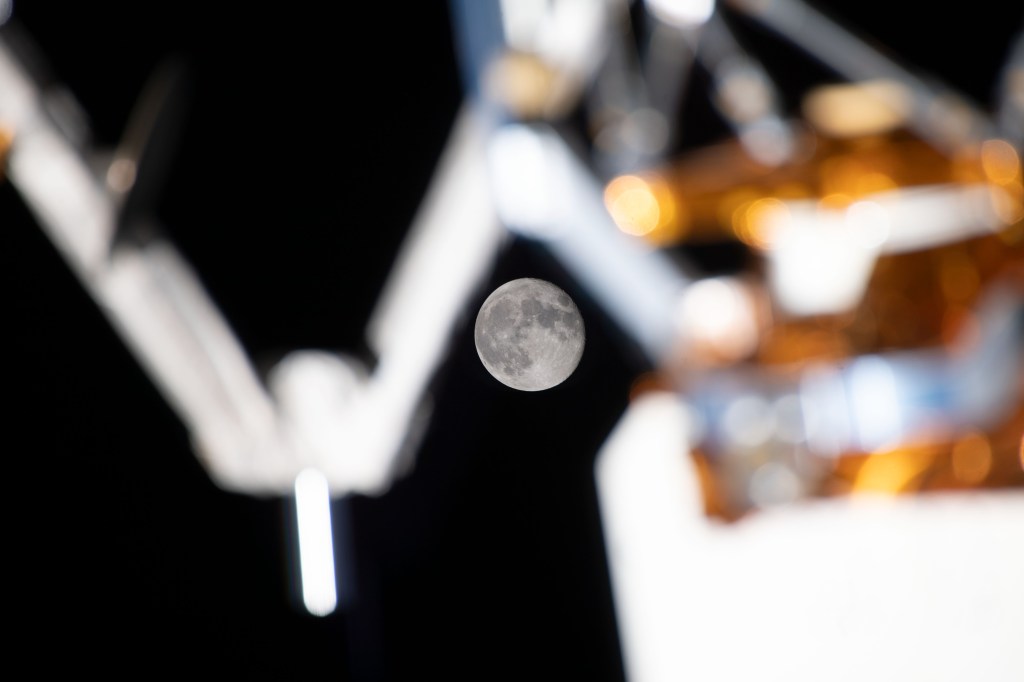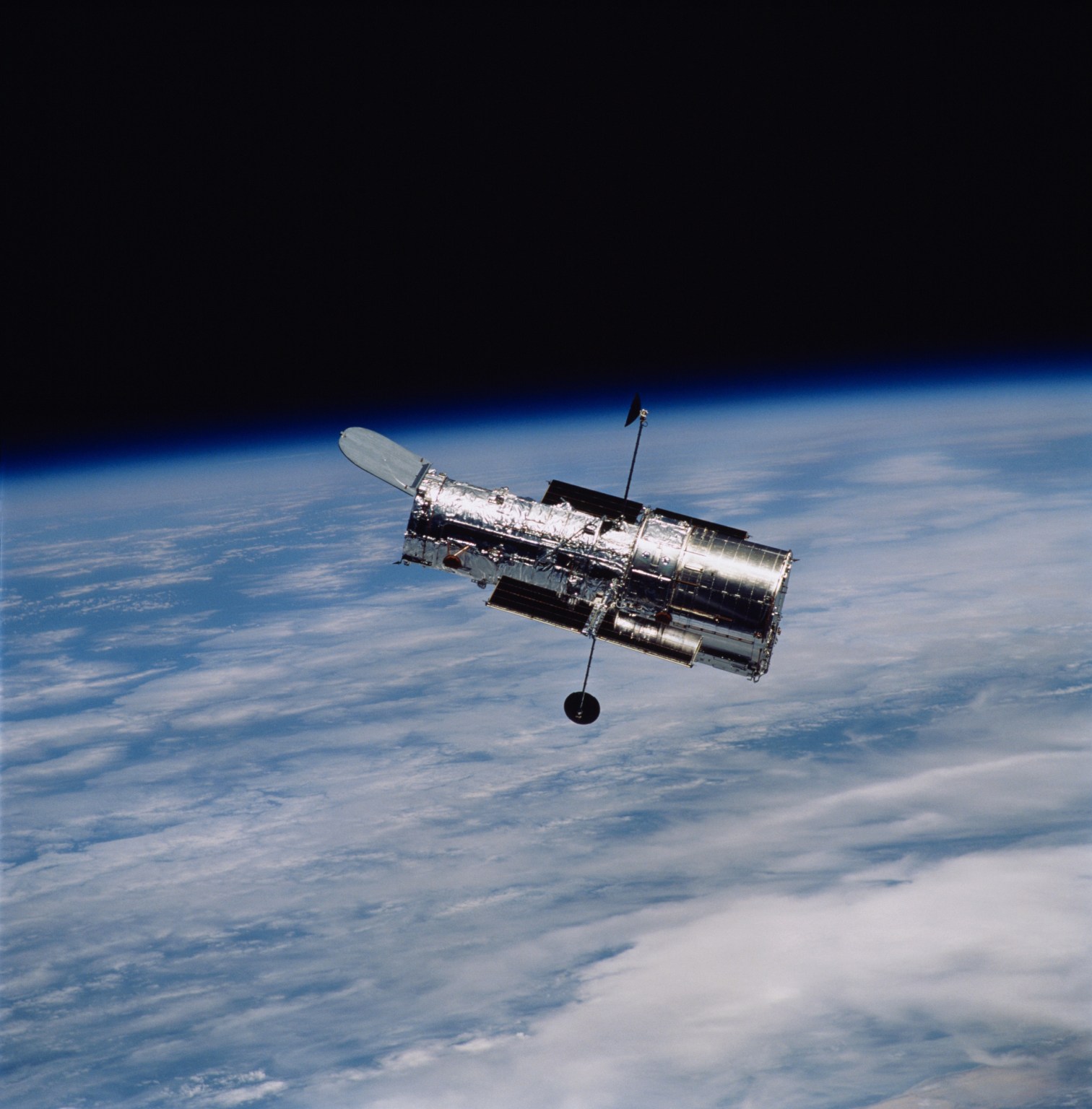1 min read
ULLYSES

The ULLYSES program studied two types of young stars: super-hot, massive, blue stars and cooler, redder, less massive stars than our Sun.
The top panel is a Hubble Space Telescope image of a star-forming region containing massive, young, blue stars in 30 Doradus, the Tarantula Nebula. Located within the Large Magellanic Cloud, this is one of the regions observed by ULLYSES.
The bottom panel shows an artist's concept of a cooler, redder, young star that's less massive than our Sun. This type of star is still gathering material from its surrounding, planet-forming disk.
- Release DateMarch 28, 2024
- Science ReleaseThree-Year Study of Young Stars with NASA’s Hubble Enters New Chapter
- CreditNASA, ESA, STScI, SOC-WFC3, ESO, Francesco Paresce (INAF-IASF Bologna), Robert O'Connell (UVA)
Share
Details
Claire Andreoli
NASA’s Goddard Space Flight Center
Greenbelt, Maryland
claire.andreoli@nasa.gov

